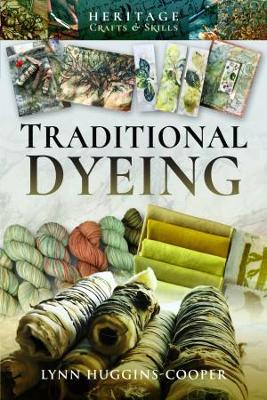Reviewed by annieb123 on
Traditional Dyeing is a broad ranging historical survey and informational guide to working with dye materials and techniques for colouring fabric and fibres written by Lynn Huggins-Cooper. Due out 30th April 2022 from Pen & Sword, it's 176 pages and will be available in paperback format.
This is the newest book in the Heritage Crafts series which cover many traditional and heritage subjects such as leatherworking and tanning, dyeing, fibre crafts, felting, and others which are in danger of being lost forever. This book makes a nice addition to the series and provides a surprisingly comprehensive look at dyeing as both a practical and decorative skill.
The material is presented in chronological chapters with history from ancient times to the modern day. With such a massive timeline, the coverage is brief for each time period, but provides a lot of tantalizing glimpses to follow up later. The last chapters include interviews with several different individual artisans and collectives. The format provides the same questions to each interviewee and it's interesting to see how they came to their craft from often disparate origins, cultures, and geographical locations but their enthusiasm and respect is shared by all of them.
The photography is sparse and mostly confined to a gallery chapter at the end of the book, but the included pictures are beautifully clear and illustrative. There is a short general tutorial (for direct printing on fabric with botanicals), short discussion of plants which are suited to a dye garden, as well as a wealth of links provided (slanted toward readers in the UK) in the form of a solid bibliography and links section to stockists and teachers. This would make a superlative library selection for a guild or shop, as well as for any crafter's home library.
This is a good, accessible, clearly written introduction the materials, history, and techniques in dyeing. The series as a whole would be superlative for library acquisition, maker's groups, homesteaders, historical re-enactors, and similar uses. The inspiration gallery is full of gorgeous photos.
Four and a half stars.
Disclosure: I received an ARC at no cost from the author/publisher for review purposes.
Reading updates
- Started reading
- Finished reading
- 26 April, 2022: Reviewed
